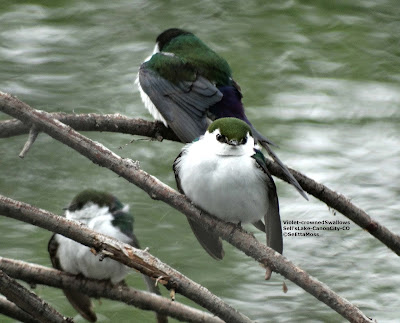Sapsuckers migrating via dry washes in Colorado?
In the fall of 2010 I found and followed several Williamson's Sapsuckers drilling sap wells in a complex of siberian-type elm trees south of Canon City that were in a dry gulch/wash located in pinyon juniper habitat. I noted some thoughts at that time that they these sapsuckers, that breed in conifer forests and especially aspen stands at higher elevation (7,000 feet+) in Colorado, might be using these dry gulches/washes for migration.
Last year was a poor year for Williamson's Sapsuckers around Canon City but this year got off to an early start when I found 2 males and a female in Lakeside Cemetery on August 28, a good month before I have previously seen this species here. Since then I have found several more Williamson's in the area including the these in the top two pics here that were on the siberian-type elm tree (only 2 trunks as much of the complex was destroyed last year) in the dry gulch/wash where I found them 2 years ago. And yesterday I found the Red-naped Sapsucker shown in the bottom pic on that tree.
I have also found evidence of fresh sap wells drilled in another siberian-type elm in a dry gulch/wash located at some distance from this one. I think that using these dry gulches/washes makes sense as migration corridors, at least in fall, since water collects in these providing the most moisture for healthy trees--especially important during these years of severe drought. Other birds seem to be using them for migration also--see next post. SeEtta





Comments